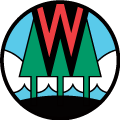Consultants
- Webpage
Build America, Buy America
One of the key priorities of the Bipartisan Infrastructure Law (BIL) is to create long-term opportunities for domestic manufacturers and manufacturing jobs and build resilient domestic supply chains for a wide range of products. Congress passed the…
- Webpage
Data Sources
The Clean Water Fund Program (CWFP) and the Safe Drinking Water Loan Program (SDWLP) use data for multiple determinations:
- Webpage
Wetland GP Surcharge Restoration Program
The Wetland General Permit (GP) Surcharge Restoration Program funds projects that benefit wetlands and associated aquatic resources through an annual RFP process.Under s. 281.36 (11), Wis. Stats., the DNR must charge a surcharge fee, to be used for…
- Webpage
MDV Annual Reports
As described in Section 283.16(8)(b)3. of the Wisconsin Statues, multi-discharger variance (MDV) funds distributed to counties must be used and reported by May 1 two years after the funds are disbursed. Each county is required to submit an Annual…
- Webpage
Reasonably Available Control Technology (RACT) for Volatile Organic Compounds (VOC)
Volatile organic compounds (VOC) react in the atmosphere to produce ozone. This air pollutant can be harmful to people and the environment when present at elevated concentrations near the earth’s surface. Emissions of VOC are controlled through…
- Webpage
Reasonably Available Control Technology (RACT) For Nitrogen Oxides (NOX)
Emissions of nitrogen oxides (NOx) must be controlled through the implementation of Reasonably Available Control Technology (RACT) regulations in ozone nonattainment areas that are classified as moderate or higher. Wisconsin RACT requirements that…
- Webpage
Air Permit Public Involvement
Notice: Update personal bookmarks to the new links for the buttons below.The Clean Air Act and Wisconsin State Statutes call for public participation and input on air permit actions. The tables below can help the public find these opportunities.Air…
- Webpage
Lake Management Tools
The Wisconsin Lake Modeling Suite (WiLMS) model is a lake water quality-planning tool. The WiLMS model structure is organized into four principal parts: front-end, phosphorus prediction, internal loading and trophic response. Models WiLMS 3.3.18 (…
- Webpage
Wisconsin Wetland Permitting Dashboard
This dashboard summarizes impacts, restoration projects, and mitigation activities that have been permitted through the DNR Wetland Program. Initiated by the Wetland Study Council in 2020, this dashboard does not include wetland impacts or…
- Webpage
Lakes and Aquatic Invasive Species (AIS) Mapping Tool
In order to keep DNR servers up to date, DNR will be patching the GIS servers to the latest service level on the morning of Sunday, December 7. During this update, users may see unexpected issues with DNR’s web map viewers. We…
